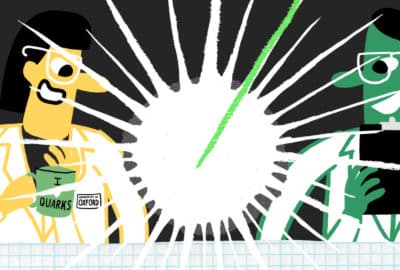Underwater Volcano Disaster
Monday 17th Dec 2012, 3.30pm
This animation is set in the Calabrian arc of southern Italy, near the well known volcano, Stromboli. Stromboli is the most active volcano in Europe and has been exploding on-and-off for at least the past thousand years. Processes like those that we show here occur in every subduction zone, where one tectonic plate sinks beneath another, and the techniques used to monitor volcanoes are also used around the world.
Subduction
Subduction zones are a central part of the plate tectonic process on Earth. Here old, cold and dense tectonic plates sink slowly into the mantle beneath an overriding plate. Typically, the sinking plates move into the mantle at rates of at a few centimetres per year. Reconstructions of plate movements show that the trench in the Calabrian arc where the African plate sinks beneath the Eurasian plate is actually rolling back towards Africa at several centimetres per year.
In many subduction zones, the plates grind past one another or get stuck and then slip in discrete jumps, leading to earthquakes. As a result, subduction zones are seismically very noisy. All of the largest earthquakes of the last ten years have happened at margins where plates are subducting (Sumatra, December 2004; Chile, February 2010; Japan, March 2011), and on global maps of recent earthquakes the trace of the plate boundaries that rim the Pacific ocean, and snake through the Mediterranean and on through the Alpine-Himalayan collision belt stand out very clearly.
The place where two plates meet is often marked by features including a build-up of rocks scraped off the top of the sinking plate; and a low point, which is sometimes a deep trench. Here, a combination of frequent earthquakes and unstable slopes can lead to landslides, and slumping of rocks onto the seafloor, and it is one of these that we show burying Ossie and the submarine.
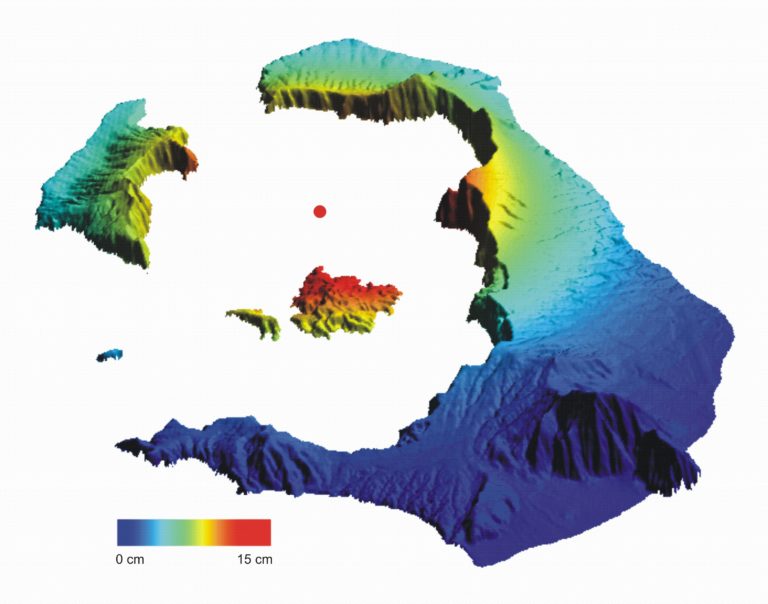
Fig. 1. Simulation, based on satellite radar measurements, of the bulging of a volcano over the course of 18 months due to movement of magma at depth. Location: Santorini, Greece. Image credit: Michelle Parks, University of Oxford.
Following the water
This next point is where we get a little bit creative to keep up with the long geological timescales, and to see the microscopic changes in the minerals making up the rocks in the sinking plate. Ossie’s submarine guide shrinks to less than a millimetre long, and then bends time so we see the process in fast-forward. They then follow the pathways that water molecules might follow in subduction zones. First, the sub moves through the fractured lavas at the top of the sinking plate, and then enters a region near the base of the crust which is rich in a mineral called olivine (Mg2SiO4 which also forms the gem known as peridot). Here, some of the olivine starts to react with the seawater that has percolated into the rock, to form a new mineral called serpentine. This is usually a white coloured fibrous mineral, and one of the constituents of the fireproof material, asbestos.
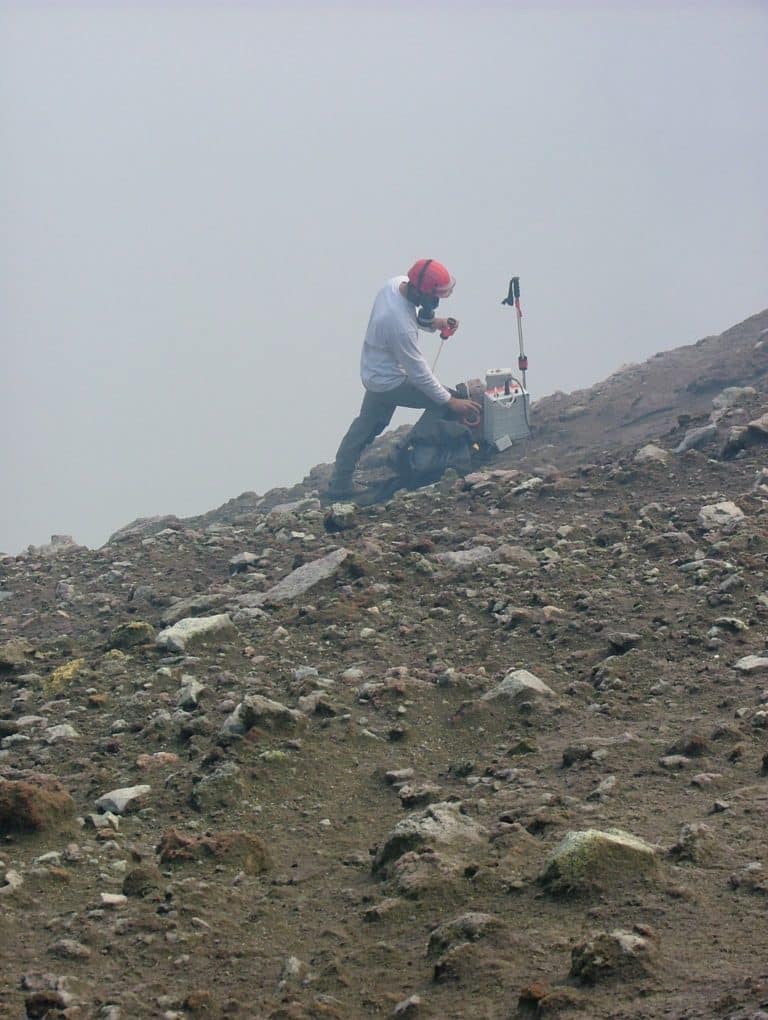
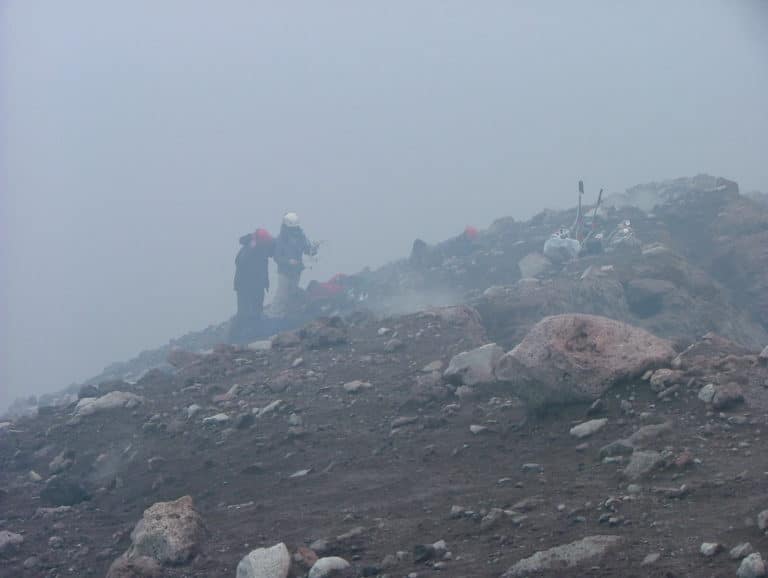
Figs. 2 & 3. Sampling volcanic gases on the edge of a volcanic crater 2: Mt Etna, Sicily. Photo credit: David Pyle, University of Oxford.
Over the next few million years the plate sinks further into the mantle, and both pressure and temperature rise. Eventually the serpentine reaches a point where it breaks down, releasing the water. At these very high temperatures and pressures (in this example, we are now at about 200 km depth and about 800 C), water is actually a dense fluid, but because it is less dense than the surrounding rock it will percolate upwards, following grain boundaries, into the overlying mantle. As the water continues to rise, the temperature increases as the lower part of the mantle has been cooled by contact with the sinking plate beneath. But once a critical temperature of about 1100 C is reached then the mantle rock (peridotite) begins to melt. At these depths and temperatures, the melt that forms is a magnesium-rich and silica-poor basalt, and all of the available water will dissolve into this magma.
Since basalt melt is less dense than the surrounding mantle rock, the magma will rise, probably in blobs, until it reaches the base of the overlying plate. Beneath Stromboli, this pool of melt can just about be detected using information from seismic waves. Once in the plumbing system of the volcano, the magma rises, cools and begins to crystallize. As the pressure drops, the amount of water that can dissolve in the magma is reduced, until bubbles of gas (steam) start to form – in this case, a few kilometres below the surface. At Stromboli, these bubbles merge together and rise quickly up through the magma-filled conduit, until it reaches the surface, where it bursts in a small explosion of gas and ash.
Anticipating an eruption
It is not yet possible to predict volcanic eruptions, but several new monitoring techniques, which are being tried out at Stromboli and elsewhere, may allow scientists to improve early warning of eruptions.
In many volcanoes, the bubbles of steam that drive the eruptions are also rich in carbon dioxide, sulphur dioxide and hydrogen chloride. These gases can be detected using chemical sensors, and spectrometers (both hand-held and on satellites), and changes in the proportions of the different gases leaking out of the volcano are often a sign of the arrival of new magma at depth. In some volcanoes, the slow rise of magma towards the surface leads to pressure changes inside the volcano, causing it to swell up. This swelling can be measured by radar instruments on orbiting satellites, and these signals are increasingly begin used to monitor the behaviour of restless volcanoes. Volcanoes themselves are also noisy, with small earthquakes triggered by the breaking open of new fractures as magma rises. The bubbly melt trapped within the plumbing system of the volcano can also act as a sound-box, leading to distinctive signals as the seismic waves from local earthquakes resonate inside the volcano.
A word of caution
Stromboli itself is very well monitored by scientists from the Istituto Nazionale di Geofisica e Vulcanologia (INGV), and carefully managed by the local Civil Defense teams. At the moment parties of tourists are not allowed to climb up the volcano without a guide, and access to areas around the summit is often restricted to avoid the perils of ash, gas and explosions.
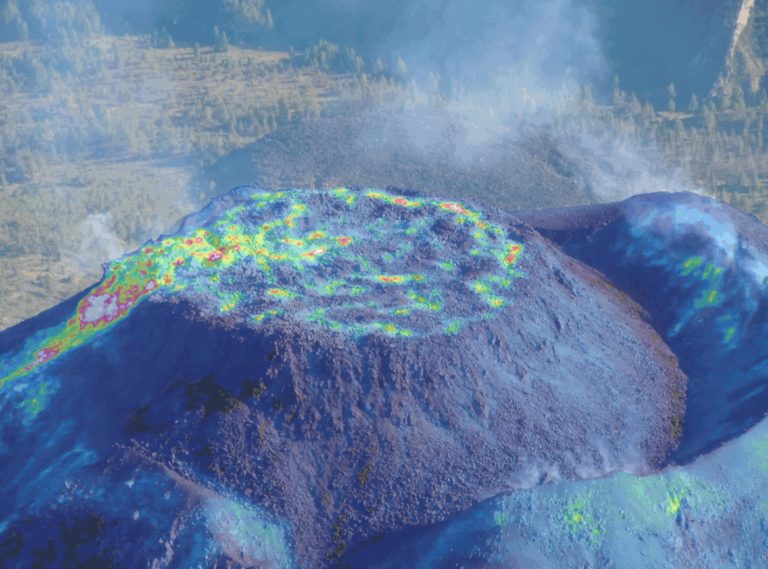
Fig. 4. Hot-spots on a lava dome at the summit of an active volcano, mapped with an infra-red camera, overlain on a digital photo. The lava dome is about 300 m across. Location: Colima volcano, Mexico. Image credit: Will Hutchison, University of Oxford.
Further information:
Teaching Resources:
Find out more:
Audio slideshow on volcanoes, with Oxford’s Dr Tamsin Mather
Fabulous photos and videos of the world’s volcanoes
Interactive resources on Plate Tectonics from The Geological Society of London
Visual resources on plate tectonics
Volcano World – news, reports and resources about volcanoes
Be a volcanologist from your desktop!


